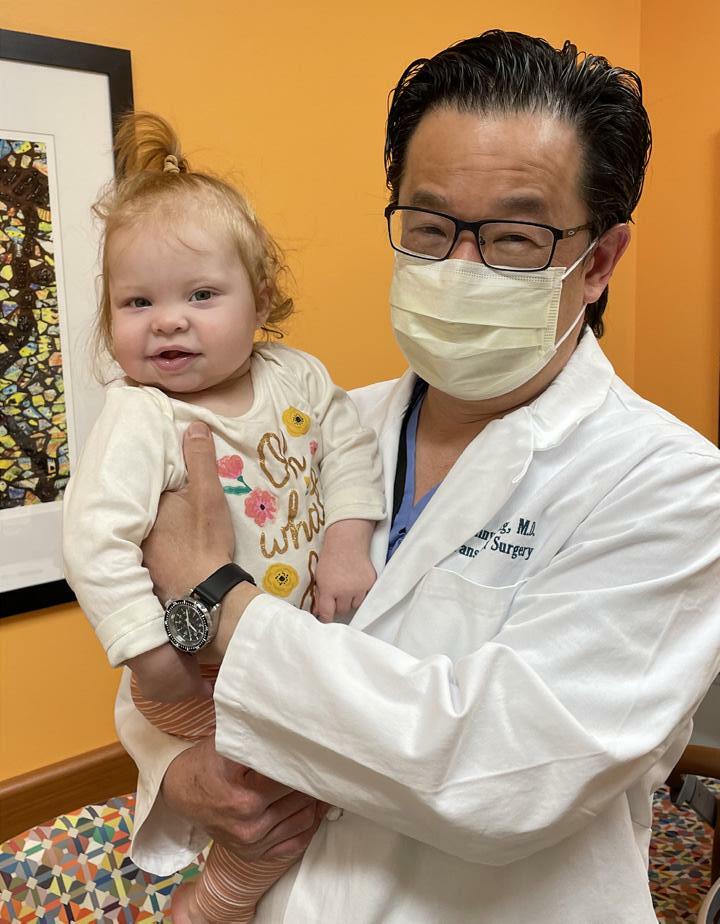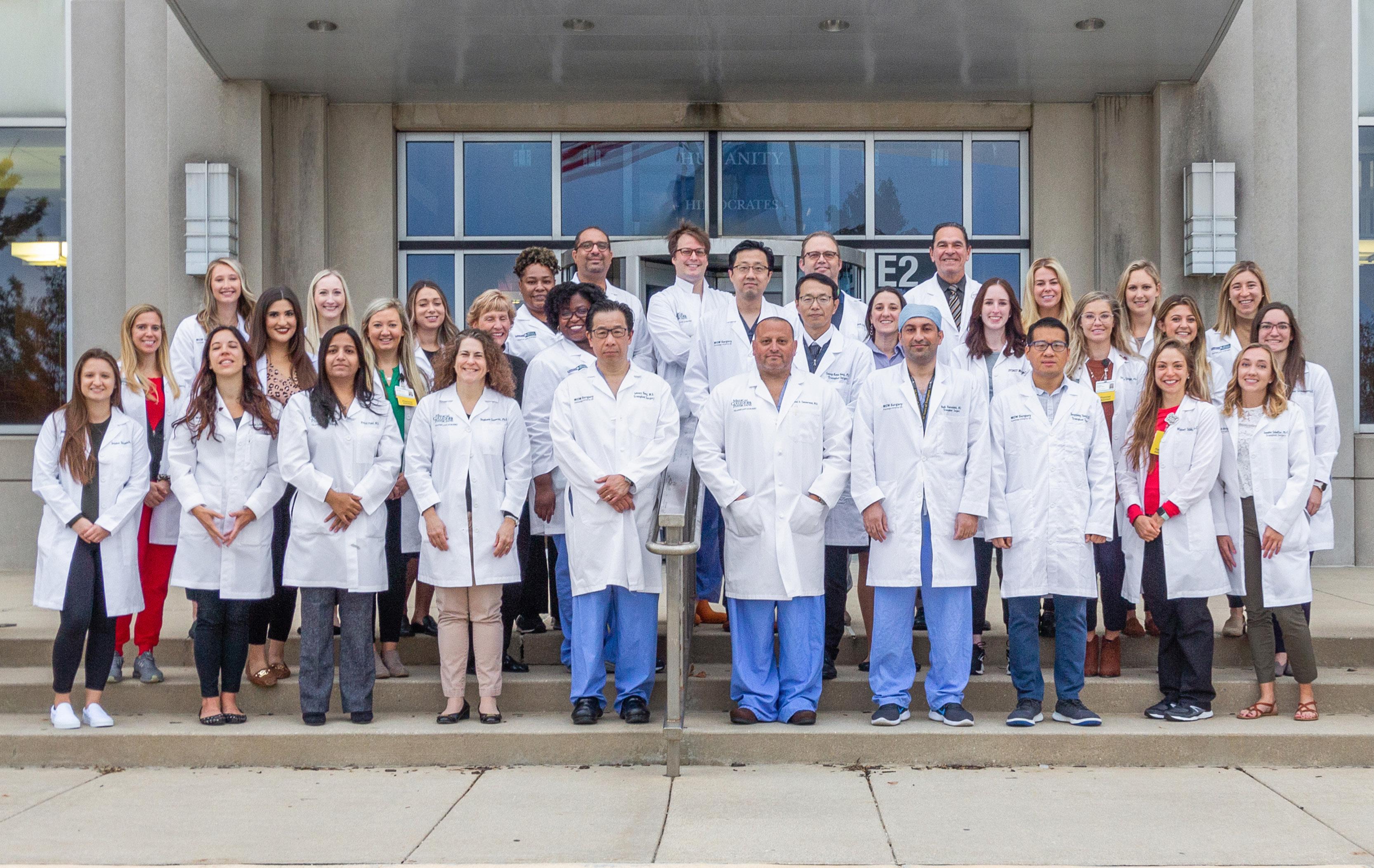
4 minute read
Transplant Surgery: Audrey's Story
Audrey Huss was born full-term and immediately experienced jaundice, a condition that causes yellow discoloration of the baby’s skin and eyes. Bilirubin is a normal part of the pigment released from the breakdown of “used” red blood cells and is responsible for the yellow color of jaundice. Normally, the liver filters bilirubin from the bloodstream and the jaundice resolves within 2 weeks.
Unfortunately, Audrey’s jaundice persisted and required additional workup that led to a diagnosis of congenital biliary atresia. There is a blockage in the ducts that carry bile from the liver to the gallbladder and intestine in this condition. The backup is caused by the absence or underdevelopment of bile ducts inside or outside the liver. Audrey underwent an operation at two months old to bypass the blocked bile duct using her small intestine, which can slow liver damage and delay the need for transplantation.
However, Audrey’s health continued to decline. She became severely malnourished and experienced fluid buildup in her abdomen and life-threatening bleeding from poor liver function. Audrey’s liver had completely failed, and she had only a short time to live without a life-saving liver transplantation.
The shortage of donated organs is a nationwide problem. In 2021, among the patients on the waiting list for liver transplantation in the U.S., only 67% received transplants. Of those, only 1.5% (136) were infants younger than 12 months. The scarcity of donated livers results in more than 2,300 patient deaths each year and is particularly devastating to small children. Furthermore, among those children who reach transplantation, more than 40% spend over a year on the waitlist.
Luckily for Audrey, the unique ability of the liver to regenerate allows for living donors to donate a part of their liver to save another life. Dr. Mark B. Adams ran the first living donor liver transplantation program at MCW from 1999-2001. Johnny C. Hong, MD reestablished the living donor liver transplantation in 2013. In 2017, Dr. Hong initiated the Anonymous (Altruistic) Living Donor Liver Transplantation Program, at a time when only 15 living donor liver transplants had been performed from anonymous living donors in the U.S. since 2013. Hence, the MCW Living Donor Liver Transplantation Program was one of few in the nation to lead this effort.
Ms. Brenda Burt heard about Audrey’s condition through a coworker, Audrey’s aunt. While Brenda did not know Audrey, she came forward without hesitation and got tested. All potential living donors must undergo a comprehensive informed consent process, particularly related to possible complications, including death and impact on the quality of life after donation. Even after a lengthy educational session and discussion about the risks, her determination to donate and save Audrey did not waver. When Dr. Hong asked her why she would do such a noble act, Brenda replied, “I am thankful to have a healthy son and would beg for someone to help my son if ever he needs one.”
Brenda underwent living donor hepatectomy (removal of a part of the liver) at Froedtert Hospital in December 2021. Brenda’s first question to Dr. Hong after the operation was, “how is the baby doing?” Brenda spent the week leading up to Christmas Day in the hospital. Brenda’s sacrifice has been extraordinary.
Audrey’s recovery has been steadfast after receiving a living donor liver transplantation. She has grown substantially and is full of energy. Audrey celebrated her first birthday with Brenda in February 2022. Brenda has resumed her everyday activities. Travis and Kendra, Audrey’s parents, genuinely appreciate Brenda’s heroic act and are also grateful for “the brilliant medical professionals, practices, and medicine that saved our sweet Audrey.” For many of us, Brenda’s act of kindness serves to restore our faith in humanity.

Audrey with Dr. Johnny Hong during a clinic visit.

Division of Transplant Surgery Faculty and APPs. (Not pictured: Drs. Johnson, Price, Roza, and Zhu.)









